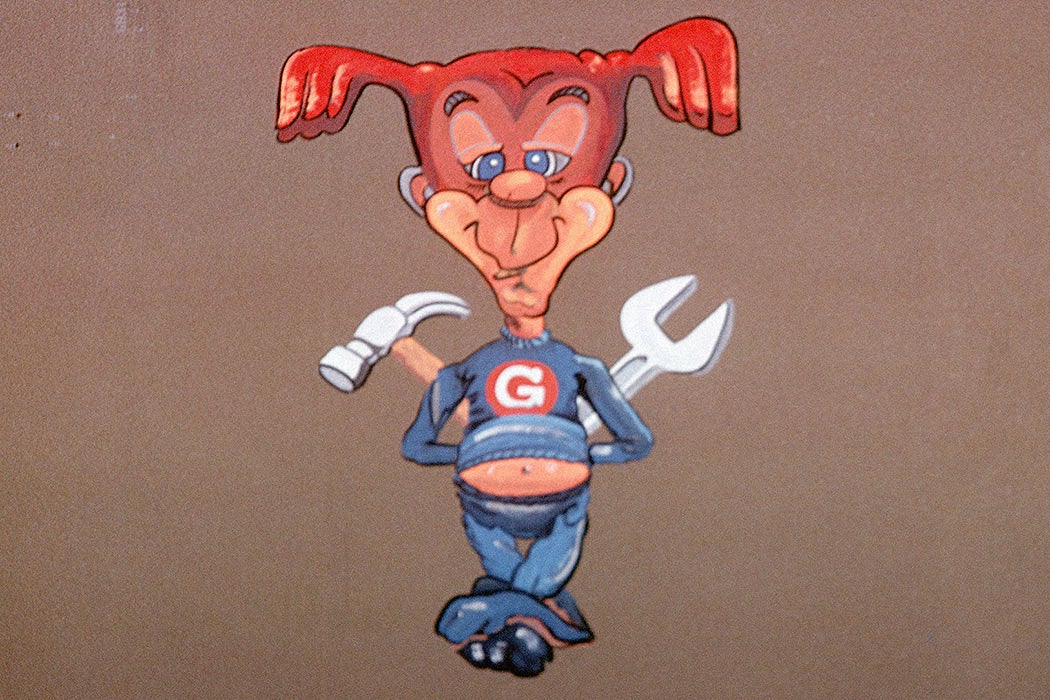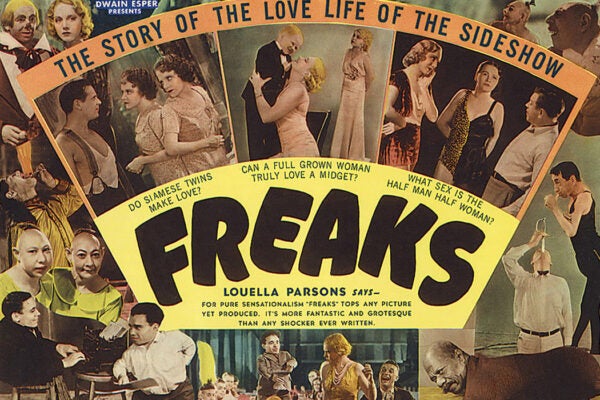When you hear the word “gremlin,” the first image that comes to mind may be the unassuming, fluffy little creatures that turn vicious when fed after midnight. The eponymous blockbuster movie—now celebrating its fortieth birthday—that introduced these beings to a wide audience is still celebrated as the quintessential horror-comedy. Hollywood gremlins are particularly interested in meddling with technological devices to cause serious accidents, and a voiceover at the end of the film ominously warns viewers that any unexplained problems with electrical devices in the home might be on account of a such a beastie lurking there. This tracks with their folkloric reputation.
Though the precise origin of the gremlin name is unclear, scholar Richard C. Clark suggests it’s linked to the Netherlandic verb grimmelen, meaning to swarm or overrun; begrimmelen, meaning to pollute or contaminate, is derived from it. The term has been traced back to 1920s Royal Naval Air Force slang, but it was during World War II, a time of rapid technological advances, that the lore evolved to such an extent that gremlins became full-fledged celebrities, characterized as pesky critters who crawled into plane machinery and destroyed it.
This wasn’t the first case of attributing unexpected mechanical defects to invisible pests. The popular term “bug” to describe technical glitches was used as early as 1876. Thomas Edison invoked the term to describe sudden difficulties in his inventions; “bugs,” he wrote, “show themselves and months of anxious watching, study and labor are requisite before commercial success-or failure-is certainly reached.” The use of “themselves” endows these creatures with a curiously sentient quality, which would be expanded upon with the popularization of the idea of plane-meddling gremlins. For average aviators, there was every reason to fear sudden and unexpected malfunctions. Unlike in Edison’s case, an infestation of pesky minibeasts in aeronautic machinery could be a matter of life and death; the job of a pilot was extremely perilous and marred by deadly accidents.
In 1944, Charles Massinger, a graduate student at New York University, theorized that the gremlins offered a coping mechanism to these increasingly stressed, greener pilots, who felt a need to invent “their own peculiar fancies and retreats to meet this dangerous situation.” Fanciful fables that assuaged the “unpredictable mutations of living with greater equanimity,” as Massinger put it, provided much-needed relief from a job in which it was never certain if the next time you strapped yourself into the cockpit would be the last.
Superstition amongst Royal Air Force personnel was a well-documented phenomenon, giving the gremlin mythology the perfect environment in which to flourish. As Hadley Meares writes in Atlas Obscura, gremlins borrowed from the fairy folk of classic British mythology to become a scapegoat for “the myriad disasters that could befall a pilot, especially during wartime.” The gremlins’ star power grew with their frequent appearances as mascots in government-issued posters commissioned by the Office for Emergency Management in 1942; these portrayed gremlins as comical characters making the lives of aircraft factory workers miserable in order to promote adherence to safety regulations such as safety goggle wearing and oil spill avoidance. The following year saw the publication of the illustrated book Gremlins by fledgling author and former flying ace Roald Dahl; it became an international bestseller.

Once the United States entered the war in 1941, it wasn’t long before similar superstitions emerged in the US Air Force. In “Superstition and the Air Force,” Tech Sergeant and military folklore collector Bill Wallrich refers to the air crew’s practice of carrying talismans and “small dolls” for good luck; these sat in “cockpits, bombardiers’ compartments, in the waist of B-17’s.” Pilots in the RAF engaged in a similar ritual, carrying aboard handmade toys known as “lucky gremlins,” which, according to the Royal Air Force Museum, were said to be virtuous and able to combat their devilish counterparts. With this newly comforting and tongue-in-cheek spirit, the gremlin demonstrated Allied forces’ use of humor and imagination to boost morale and quell anxiety
After the war, the gremlins’ popularity dwindled, until 1984, when the huge success of the movie cemented their status as pop culture darlings. No longer were gremlins only representative of niche superstitions held by nervous military airmen. Yet in their original form gremlins are alive and well, living under new names—daemons, worms, virtual pets. In turn, humans continue to insert critter lore into tech, in an effort perhaps to anthropomorphize these ever-advancing, bewildering machines and thereby make it easier to coexist with them.
Fenwick McKelvey, a professor of information and communication tech policy, traces the use of “daemons” to descriptions of background software programs that control the internet’s infrastructure. The term originated with the computer programmers of Project MAC, founded in 1963 at the Massachusetts Institute of Technology, where it was used to label programs that would keep systems in running order independent of the user. Founding project member Fernando José Corbató stated that “daemon” derived from Maxwell’s demon, a hypothetical being created by the physicist James Clerk Maxwell in 1867 to disprove the second law of thermodynamics. Maxwell’s demon is able to distinguish between fast- and slow-moving molecules, giving it an omnipotent quality, and in similar fashion, the computer daemon is able to make decisions in performing, as Corbató puts it, “system chores.” This recalls the gremlins in Dahl’s novel who are convinced by a pilot to use their powers for good and subsequently train to become mechanics for the RAF. The spelling of “daemon” also harkens to lesser deities in Ancient Greek mythology who acted as guardians. And in Plato’s Dialogues, the daemon appears as a conduit between God and humanity, delivering messages and acting as “guiding and protecting forces,” according to scholar Anna Somfai. The computer daemon operates in a similar manner, continuously working behind the scenes to keep processes going and to address service requests.
With further innovations in computer software came more bothersome entities with a less noble output, such as the “computer worm,” a self-replicative program that invades networks without human interference. Early worms often had a playful nature, with distinct personalities and tricksy behavior not dissimilar to their gremlin ancestors. The earliest documented worm is the program known as Creeper, which would display the message, “I’M THE CREEPER: CATCH ME IF YOU CAN!” Intended as a harmless experiment by computer engineer Bob Thomas at BBN Technologies in 1971, it was nonetheless an exhibitor of the “viral-like features” later used for malicious purposes. Such worms took on the characterization of a prankster, like the WANK (Worms Against Nuclear Killers), which plagued NASA computers with pacifist messages in 1989 and deceived users into believing their files were being deleted. There was also Blaster, which, in 2003, taunted Microsoft founder Bill Gates with a message reading, “billy gates why do you make this possible? Stop making money and fix your software!!” It seemed that anyone with sufficient programming acumen and a desktop could transform into a gremlin—or create one—causing utter mayhem.
If playing hacker-gremlin didn’t appeal, a person could always purchase the next best thing—the Furby virtual pet. Popular in the late ’90s and early 2000s, the Furby, with a remarkably similar design to the unbearably cute Gizmo character from the 1984 film, was programmed to evolve its speech from Furbish gibberish to decipherable English. The Furby’s gremlin-like features and vexatious coos and chirps immediately subjected it to far-fetched speculation about its ability, for example, to destroy medical equipment and to teach children to swear and act as spies. Indeed, in 1999 CBS News reported on concerns within the NSA that Furbies could interfere with a plane’s instruments, just as its gremlin forefathers did.
The engineering of intelligent life using lifeless substances, as William Hasselberger observes, has long existed in our imaginations. Take, for instance, the “golem” from Jewish folklore, a sentient being formed from clay and mud, and Mary Shelley’s Frankenstein, whose protagonist is assembled from dead body parts and created in the midst of the industrial revolution, just when machines began to dominate human lives. The anthropomorphizing of tech marvels to cope with the widening gulf between human autonomy and machine automata has only continued since the days of superstitious pilots. Whether they’re called bugs, worms, daemons, or gremlins, these unpredictable pests in the machines remind us of not only our fallibility, but our hubris. As the mysterious shopkeeper warned in the 1984 movie, “You do with mogwai what your society has done with all of nature’s gifts. You do not understand. You are not ready.”







